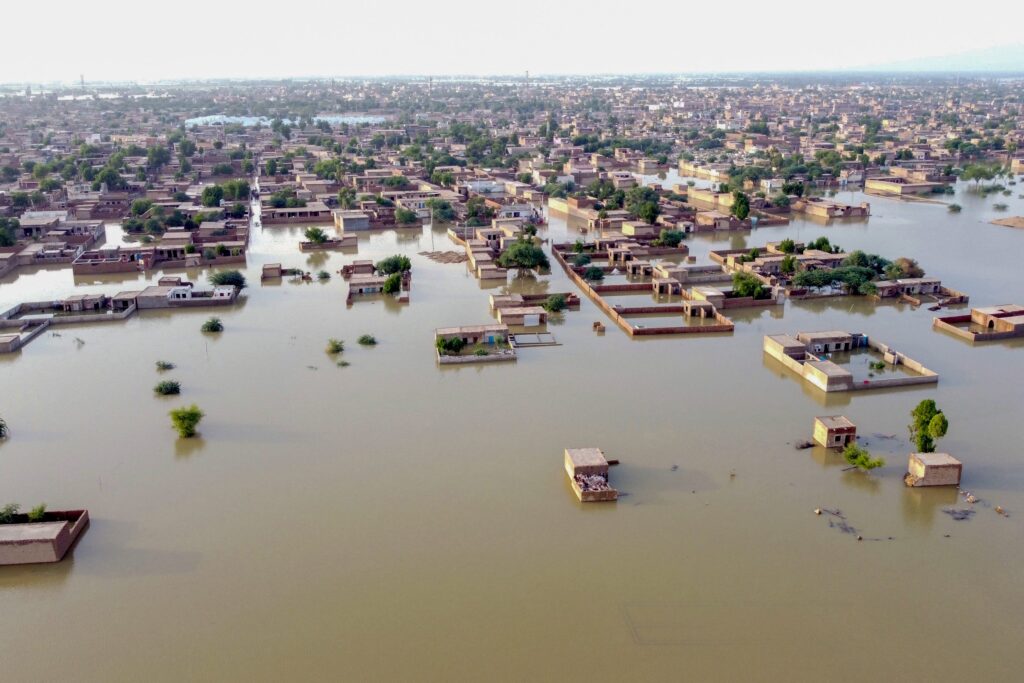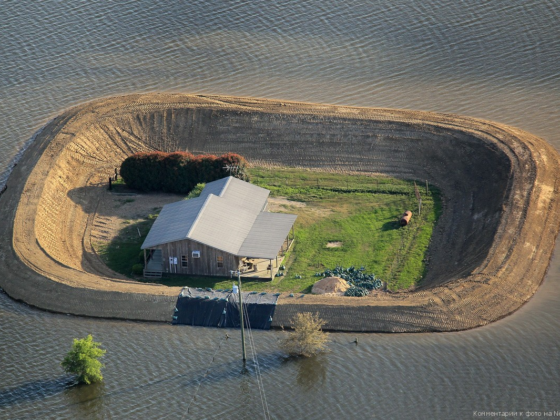Floods in Pakistan have caused significant destruction, claiming lives and damaging infrastructure across the country. The National Disaster Management Authority (NDMA) reports that since mid-June 2022, floods have resulted in 937 deaths. The recent monsoon rains have been particularly devastating, impacting regions like Sindh, South Punjab, Khyber Pakhtunkhwa, and Balochistan, and leaving approximately 50,000 people homeless.
The monsoon rains in August 2022 were especially severe, with rainfall reaching 166.8 mm compared to the usual 48 mm during the same period last year. This marks a 241% increase in average rainfall. Notably, Sindh and Balochistan experienced rainfall increases of 784% and 496% respectively, causing widespread destruction and leaving around 30 million people without shelter.
Causes of Floods in Pakistan
1. Heavy Rainfalls:
The main cause of flooding is heavy rainfalls during the monsoon season, which increase water levels in the Indus River and its tributaries such as Jhelum, Chenab, Ravi, and Sutlej Rivers. The monsoon spells this year has been unprecedented, with a significant impact on southern Pakistan.
2. Deforestation:
Deforestation has led to an increase in the intensity of rainfalls. According to Global Forest Watch, Pakistan lost approximately 63.2 hectares of forest cover in 2021, contributing to climate change and higher temperatures.
3. Lack of Dam Construction:
No more dam in Pakistan have been constructed in the past few years, Insufficient dam construction exacerbates the effects of flooding. Current projects such as the Mohmand and Diamer Bhasha dams are underway, but additional water reservoirs are needed to handle extreme weather conditions. Moreover, apart from these two dams, more dams are under construction in Pakistan.
Data on Heaviest Rainfalls
A record of heaviest rainfalls in Pakistan from 1931 to 2020 shows that extreme rainfalls have become increasingly common. For instance, on August 11, 2011, Tando Ghulam Ali in Sindh recorded 350 mm of rainfall in a single day. Other cities across Pakistan have also experienced significant rainfall.
| Date | Rainfall (mm) | City | Province |
| 11 August 2011 | 350 | Tando Ghulam Ali | Sindh |
| 23 July 2001 | 335 | Rawalpindi (Shamsabad) | Punjab |
| 10 September 2012 | 305 | Jacobabad | Sindh |
| 5 September 2014 | 300 | Lahore | Punjab |
| 5 September 2014 | 296 | Jhelum | Punjab |
| 5 September 2014 | 297 | Islamabad | Islamabad Capital Territory |
| 10 August 2011 | 291 | Mithi | Sindh |
| 29 July 2010 | 280 | Risalpur | Khyber Pakhtunkhwa |
| 7 August 1953 | 278.1 | Karachi (Manora) | Sindh |
| 29 July 2010 | 274 | Peshawar | Khyber Pakhtunkhwa |
| 5 September 1961 | 264.2 | Faisalabad | Punjab |
| 30 July 2010 | 257 | Islamabad | Islamabad Capital Territory |
| 29 July 2010 | 257 | Cherat | Khyber Pakhtunkhwa |
| 2 July 1972 | 256.5 | Nawabshah | Sindh |
| 10 September 1992 | 255 | Murree | Punjab |
| 5 September 2014 | 251 | Mangla | Punjab |
| 5 September 2014 | 251 | Sialkot | Punjab |
| 12 September 1962 | 250.7 | Hyderabad | Sindh |
| 18 July 2009 | 205 | Karachi (Masroor) | Sindh |
| 5 September 2014 | 243 | Islamabad | Islamabad Capital Territory |
| 2 September 2020 | 240 | Bahawalnagar | Punjab |
| 26 August 2011 | 240 | Kohat | Khyber Pakhtunkhwa |
| 31 August 2011 | 238 | Padidan | Sindh |
| 5 September 2014 | 234 | Rawalakot | Azad Kashmir |
| 27 August 1997 | 233.8 | Murree | Punjab |
| 29 July 2010 | 233 | Kohat | Khyber Pakhtunkhwa |
| 30 July 2010 | 231 | Murree | Punjab |
| 6 June 2010 | 227 | Gwadar | BalochistanBalouchistan |
| 7 September 2011 | 225 | Mithi | Sindh |
| 13 August 2008 | 221 | Lahore | Punjab |
| 20 July 2013 | 217 | Islamabad | Islamabad Capital Territory |
| 1 August 1976 | 211 | Lahore | Punjab |
| 8 July 2003 | 209 | Larkana | Sindh |
| 10 September 1992 | 208 | Muzaffarabad | Azad Kashmir |
| 1 July 1977 | 207.6 | Karachi | Sindh |
| 29 July 2007 | 205 | Sargodha | Punjab |
| 4 August 2010 | 202 | Dera Ismail Khan | Khyber Pakhtunkhwa |
| 11 August 2011 | 200 | Tando Mohammad Khan | Sindh |
| 11 August 2011 | 200 | Tando Ghulam Haider | Sindh |
| 24 July 2001 | 200 | Islamabad | Islamabad Capital Territory |
| 27 August 1997 | 200 | Islamabad | Islamabad Capital Territory |
Conclusion
While monsoon rains are a major cause of floods, there are other natural and human-made factors that contribute to the severity of the situation. The government must take proactive measures such as building more dams and addressing climate change issues to mitigate the impact of future floods. In the long run, comprehensive flood safety measures and environmental management strategies are essential to protect communities and prevent further losses.


